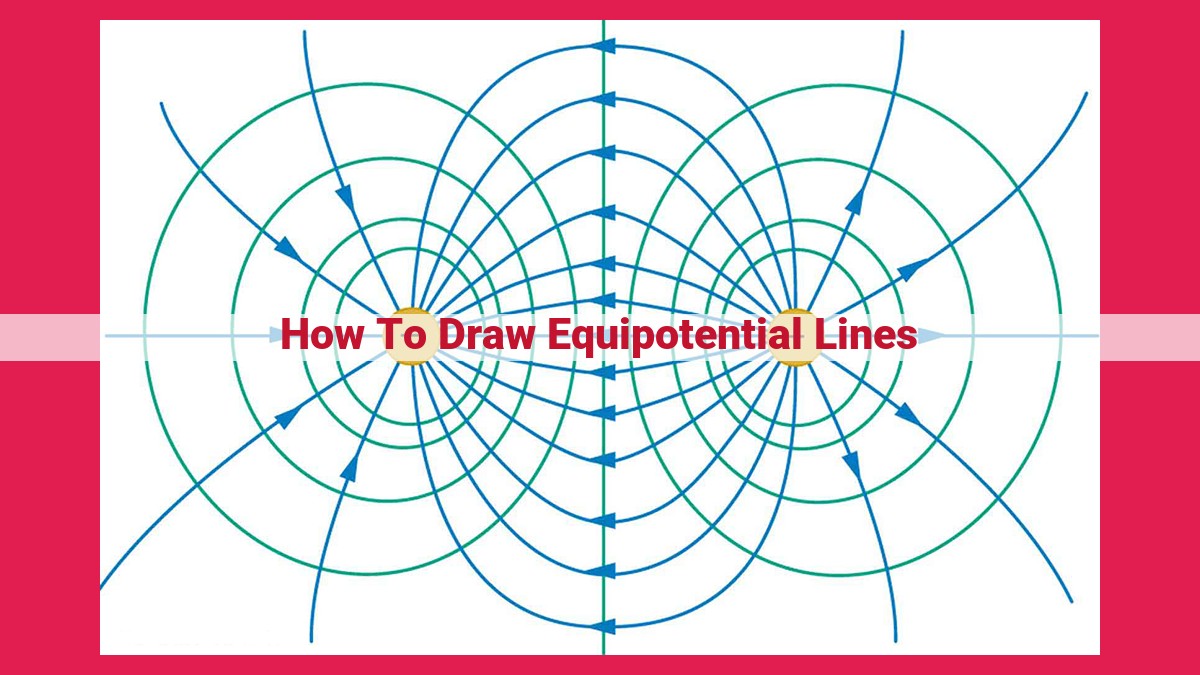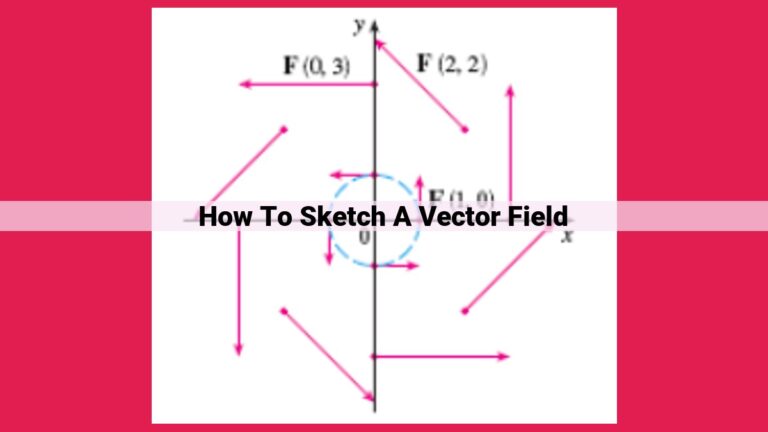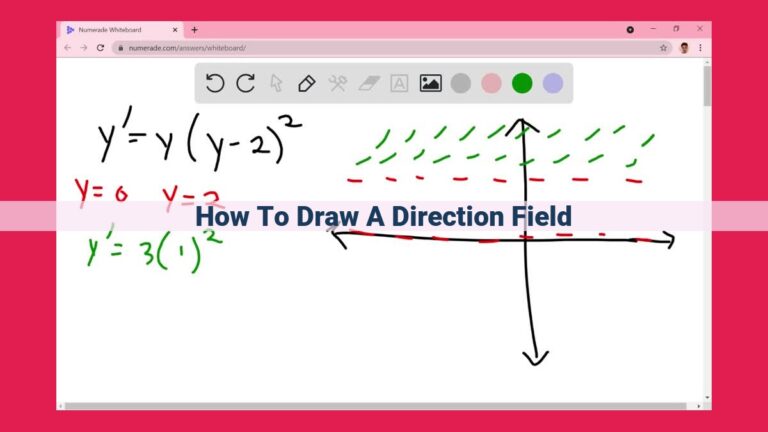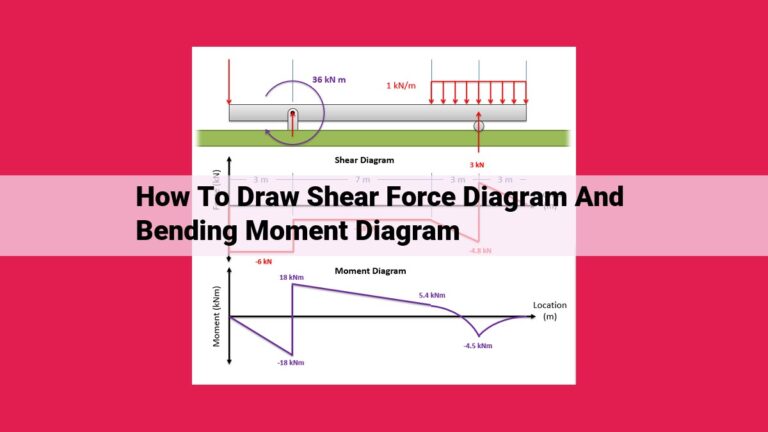Unlocking Electric Fields: A Guide To Equipotential Lines And Their Applications

Equipotential lines, constant-potential contours in electric fields, provide critical insights into the field’s behavior. To draw them, choose a reference point, locate zero electric field points (field lines perpendicular to surfaces), and connect these points to form smooth lines perpendicular to field lines. Equipotential lines effectively represent potential distribution, enabling analysis of electric fields in diverse areas like electrostatics and electrical engineering.
Equipotential Lines: Unraveling the Dynamics of Electric Fields
Equipotential lines, an indispensable tool in the world of electromagnetism, serve as a visual representation of electric fields. These lines connect points with equal electric potential, akin to contour lines on a map that indicate areas with the same elevation. Understanding equipotential lines is paramount to comprehending the intricacies of electric fields, enabling engineers, physicists, and students alike to analyze and design electrical systems.
The Significance of Equipotential Lines
Electric potential, measured in volts, quantifies the energy possessed by an electric charge at a specific point in space. It’s akin to a gravitational potential in electromagnetism, where charges experience forces due to the presence of other charges. Equipotential lines, which are perpendicular to electric field lines, represent surfaces where the electric potential remains constant. They provide valuable insights into the behavior of electric fields, helping us visualize the strength and direction of the forces acting on charges.
Drawing Equipotential Lines
Drawing equipotential lines requires careful attention to the electric field. The process involves identifying points with zero electric field, known as zero-field points. These points often lie on the surfaces of conductors or insulators, where charges can move freely. By connecting these zero-field points, we can form closed curves that represent equipotential lines. The spacing between these lines indicates the strength of the electric field, with closer lines indicating a stronger field.
Applications of Equipotential Lines
Equipotential lines find widespread application across various fields, including electrostatics, electrical engineering, and circuit design. They aid in the design of capacitors, resistors, and other electrical components, enabling engineers to optimize performance and minimize energy losses. In medical imaging, equipotential lines help visualize the electrical activity of the heart, providing valuable information for diagnosing cardiac arrhythmias. Moreover, these lines are crucial in understanding the behavior of electric discharges, such as lightning and sparks, as they reveal the paths of least resistance for electrical current.
Key Concepts in Understanding Equipotential Lines
To grasp the significance of equipotential lines in comprehending electric fields, it’s crucial to lay out some fundamental concepts.
Electric Potential
Imagine a charged object, such as a battery or magnet, creating an invisible field around it. This field exerts a force on other charged objects, like a magnet attracting a paperclip. The electric potential at a given point is a measure of the amount of work required to bring a unit positive charge from infinity to that point. It’s measured in volts (V).
Reference Point
When measuring electric potential, it’s essential to establish a reference point. This point acts as a baseline from which all other potential measurements are made. The choice of reference point is arbitrary, as long as it’s consistently used.
Electric Field
The electric field at a point is a vector quantity that describes both the magnitude (strength) and direction of the electric force acting on a positive charge. It’s measured in volts per meter (V/m).
These concepts form the cornerstone for understanding how equipotential lines help us visualize electric fields in a intuitive way.
Understanding Equipotential Lines
Imagine yourself navigating a landscape where the elevation remains constant. You walk along a path that always maintains the same height above sea level. These paths are known as equipotential lines in the realm of electricity. Just as elevation lines on a map represent constant height, equipotential lines represent points with uniform electric potential.
Electric potential measures the stored electrical energy per unit charge. It’s like a voltage map, showing how much electrical pressure exists at any given point. The reference point for electric potential is usually earth, which is assigned a value of 0 volts.
Electric field lines, on the other hand, indicate the direction and strength of the electric force at each point. These field lines are always perpendicular to equipotential lines. This means that electric charges move along equipotential lines but not across them.
Step-by-Step Guide to Drawing Equipotential Lines
Embracing the Power of Equipotential Lines
Equipotential lines are a graphical representation of electric fields, helping us understand the distribution of electric potential and the behavior of electric charges. Drawing these lines provides valuable insights into the intricacies of electric fields, enabling us to analyze and solve practical problems.
Step 1: Establish a Reference Point
The first step in drawing equipotential lines is to choose a reference point. This point represents a location where the electric potential is defined as zero. Common choices include infinity or the point of contact between a conducting surface and the ground.
Step 2: Locate Zero Electric Field Points
Next, we need to identify points where the electric field is zero. These points lie perpendicular to the equipotential lines. We can find them by using field lines, which are another graphical representation of electric fields. Field lines always point in the direction of the electric field, so points where they are perpendicular to each other have zero electric field.
Step 3: Connect the Points
Once we have located several zero electric field points, we can connect them to form equipotential lines. These lines represent points with the same electric potential. By connecting the points, we create a map of the electric field, showing how the potential varies in space.
Example: Drawing Equipotential Lines Around a Positive Charge
Consider a positive charge located at the center of a circle. The electric field lines extend radially outward from the charge. Perpendicular to these field lines are the equipotential lines, which are concentric circles centered around the charge. The potential decreases as we move away from the charge, with the lowest potential at infinity and the highest potential at the charge itself.
Drawing equipotential lines is a valuable technique for visualizing and understanding electric fields. By following these steps, we can create a graphical representation that helps us analyze the distribution of electric potential and solve problems related to electric fields.
Applications of Equipotential Lines
Equipotential lines are not just theoretical concepts; they have a wide range of practical applications in various fields, making them invaluable tools for understanding and manipulating electric fields.
Electrostatics
In electrostatics, equipotential lines play a crucial role in analyzing charge distributions and their influence on nearby objects. They can be used to determine the electric field strength and direction at any point in space, helping engineers design electrical components and predict the behavior of charged systems.
Electrical Engineering
Equipotential lines are also essential in electrical engineering, particularly in the design of electrical circuits and devices. By analyzing the equipotential lines around a conductor, engineers can optimize current flow and minimize electrical losses. This knowledge is critical for designing efficient and reliable electrical systems.
Practical Examples
Here are a few specific examples of how equipotential lines are used in practice:
-
Analyzing Electric Fields: Engineers use equipotential lines to visualize and analyze electric fields around complex structures, such as transmission lines, antennas, and electrical machines. This information helps them understand how the fields interact with objects and optimize their designs.
-
Solving Electrostatic Problems: Equipotential lines can be used to solve electrostatic problems, such as determining the potential at a given point or finding the charge distribution on a conductor. These solutions are essential for designing electrical devices and predicting their behavior.
-
Creating Electrostatic Shields: Equipotential lines can be used to design electrostatic shields, which are used to protect sensitive electronic components from external electric fields. By creating a region of constant potential around the components, electrostatic shields minimize interference and ensure proper operation.
In conclusion, equipotential lines are powerful tools that provide valuable insights into electric fields and their practical applications. By understanding and utilizing these lines, scientists and engineers can design and optimize electrical systems, devices, and components for a wide range of applications.





